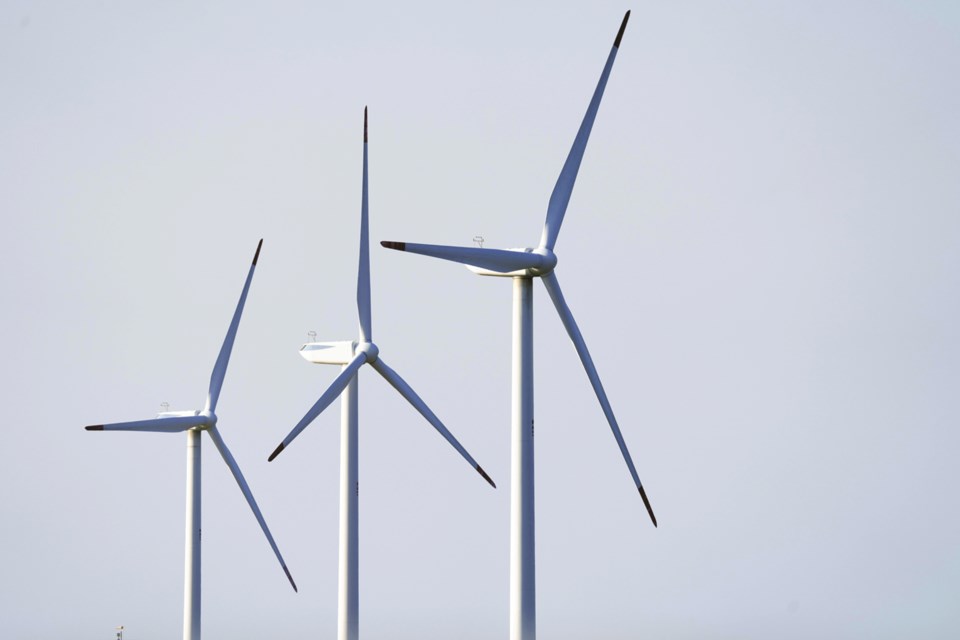ST. PAUL – A group of residents called Wind Concerns spoke to County of St. Paul council regarding concerns with a proposed Northern Valley Wind Project, during a delegation at the Public Works meeting on Jan. 30.
Over 20 people attended the delegation.
Elemental Energy, a Vancouver-based company that develops, owns, and operates renewable energy projects across North America, has proposed the 75-megawatt wind power facility in the Northern Valley area, 15 minutes south of Elk Point.
During the delegation, Mark Mallett spoke on behalf of the group.
Prior to speaking, the group first presented a video to council showing what Mallett said were the effects and impacts of wind turbines on people.
“We are deeply concerned about the health effects [of wind turbines],” said Mallett.
He said he spoke to a vibroacoustic disease expert who is in Europe named Dr. Mariana Alvarez Perez.
“She said the higher the turbines, the more exponential is the effects... the impacts on people,” said Mallett. “We all feel that we are an experiment in Northern Valley, that we’re going to be a human experiment, and that is absolutely intolerable and unjust and wrong on every level.”
A voice
Mallett added the reason they were speaking to council is because the group wants to reiterate that the municipality has a voice. “We heard from you... that you feel that no matter what you do as a municipality – the AUC (Alberta Utilities Commission) won’t listen to you,” he said.
“Well, the AUC does want your input,” said Mallett. He cited the Foothills Solar Project, a 1,500-acre solar project proposed to be built east of High River close to Frank Lake. The AUC rejected the proposal last year.
According to Mallett, the AUC concluded that the potential for the project could result in high bird mortalities in the Frank Lake area, “and the social environmental values that it represents are unacceptable.”
“So, the AUC shocked us all. They didn’t rubber stamp the project. They said this was based on the arguments from the Foothills County,” added Mallett.
Following even more discussions, Wind Concerns presented suggestions of bylaws based on already-existing bylaws from municipalities across North America.
Proposed bylaws
The group proposed that Industrial Wind Turbines (IWT’s) may only be erected on Class 5-7 agricultural land in this county, “which is the worst soil conditions,” said Mallett, adding soil conditions are good in the Northern Valley region.
“In 2022, the United Nations (UN) announced there’s an impending global food crisis... that’s right on their website,” said Mallett, adding, to turn agricultural farmland into a wind turbine industrial factory would be a mistake.
They also proposed that IWT’s “may not be erected within a setback of 15 km from residences or businesses,” said Mallett, citing this was based on “current adverse health events” studies conducted in Norway.
The third proposed bylaw is that a turbine must also be set back four times its height from property lines, proposed Mallett, noting this bylaw has already been passed by the County of Two Hills.
“We would urge you especially... to mirror their [County of Two Hills] bylaw and join forces with them to stop these turbines from coming into our community.”
Malette also asked council to pass a bylaw that would disallow the disposal of wind turbine components in municipal landfills, along with a bylaw that would enforce the complete reclamation of sites once the turbines are no longer being used.
He then recommended that the County also pass a bylaw ensuring turbines are not erected within 25 km of regional and provincial parks with lakes.
The group also proposed a bylaw that would require wind turbines to be set back 5 km away from wildlife and biodiversity zones, wildlife preserves, important bird areas, endangered species habitats, and away from the North Saskatchewan River.
Deputy Reeve Maxine Fodness asked County of St. Paul CAO Jason Wallsmith on the feasibility of passing the bylaws, and if they would require a different bylaw category separate from the municipality’s existing Land Use Bylaw (LUB).
Wallsmith said most proposed bylaws are applicable to be included with the LUB. “But we’d have to do more research to be certain. But they all look like generally things that would fit with the [LUB],” he said.
Fodness said there will be a public hearing on Feb. 13 where they will be making amendments to the LUB and could consider adding the proposed bylaws by Wind Concerns.
“We would ask, respectfully, if this could be hastened as soon as possible,” said Malette, reiterating the bylaws they proposed are scientifically based or are based on already existing bylaws from municipalities in the United States and Canada. “Several of the bylaws are mirror of bylaws already in existence... it’s not like you have to rewrite the script here.”
“It’s more of a procedural thing,” said Wallsmith, noting there is a process that needs to be followed when amending the LUB, along with a public hearing. He noted that proposed changes to the LUB might not be reflected in time for the Feb. 13 public hearing.
The delegation was accepted as information.



